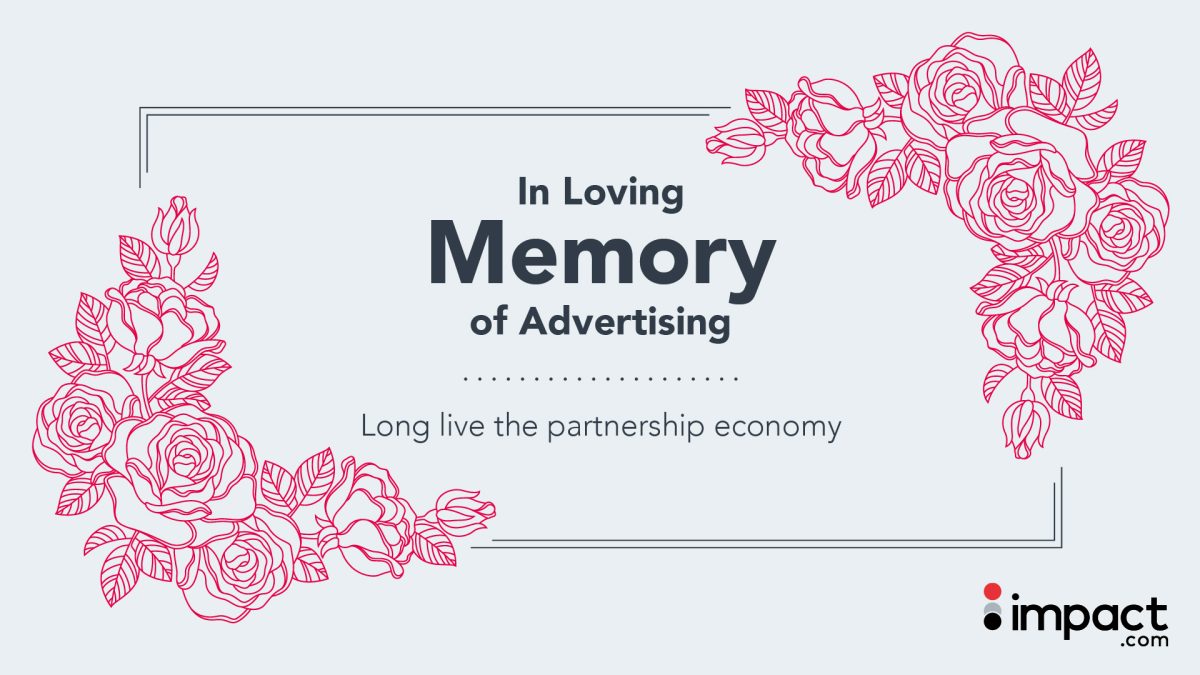For some years now, digital advertising has been in its protracted death throes
As a result of bad habits around data privacy, authenticity, and poor ad creative established from the earliest days of digital in the 1990s, by 2017 69% of consumers no longer trusted digital ads. Then, just as things looked like they couldn’t get any worse, Covid-19 hit, turbocharging this decline into a high speed, high energy nosedive. The pandemic caused huge industry disruption and an ongoing uncertainty in the economy, and it altered audience behaviour forever.
Now, with the UK in recession, and an estimated 50-50 chance that the US will follow suit, consumers are facing even greater challenges and financial pressures. With traditional digital marketing methods failing, advertisers are looking at new ways to reach and build relationships with their audience.
Partnerships… their time has come
At the same time as ads were wearing out their welcome, the rise of influencers and user-generated content was giving an early indicator that when a content creator recommends a brand in their authentic voice, the audience connects with that content in a more profound way. It establishes a level of trust that brand-generated ads simply can’t.
The development of ways for brands to work alongside such partners — including influencers, affiliates, publishers and other brands — has been the story of partnership marketing, and where advertising finds withering returns, partnerships represent new growth.
While the advantages have been apparent for some time, there’s a particular sense among the industry that 2022 was a seminal year for partnerships, as the penny dropped for advertisers, brands and publishers about its true power and potential in engaging an audience in a meaningful, trustworthy way. As a result, many brands now see partnerships as an integral part of their marketing ecosystem, rather than simply a new ad channel to explore.
The basic premise of the partnership economy is simple
Rather than hammering consumers with ancient ad formats featuring poor creative and questionable data targeting methods, why not engage an audience via performance-based collaborations between a brand and another business or influencer, affiliate, content publisher or strategic brand partner?
These entities are ideally placed to induce people to purchase a service or product in return for a commission, and do this via anything from reviews on social media, through to brand collaborations and content pieces.
Regardless of the type of partner, partnership marketing is about reaching audiences in an authentic way and building long-term relations with consumers based on trust. And this is because — ultimately — more trust equals more revenue.

The proof of the partnership pudding is in the eating
Underlying the increasing enthusiasm around the partnership economy is the fact that it delivers results. Big time. Generally speaking, brands that take part in long-term partnership programmes have seen their overall revenue grow by 28%, and certain types of partner are producing truly sensational performance figures.
For example, micro-influencer partners have been a hot topic over the past eight months, driving some of the highest rates of engagement. Micro-influencers on Instagram boast an average engagement rate of 3.86%, compared to 1.21% for mega-influencers. No surprise, then, that micro-influencers constitute a major trend among brands, particularly those on a tighter budget.
The partnership economy is also about much more than just conversions
Brands are successfully using partners to boost brand awareness, as well as sales. When engaging in partnership marketing, companies won’t always experience an immediate increase in revenue. However, their activity in this space gives their audience time to get acquainted with their brand and makes it more likely they will convert into paying customers at a later date.
Another benefit of partnership marketing is that customer retention (as well as acquisition) is enhanced, to the extent that 76% of the companies surveyed in a 2019 Forrester report agreed that partnerships are vital to delivering on their revenue goals.
The data a partnership produces puts brands in full control of their marketing efforts in a way the ambiguity of programmatic advertising cannot, helping them make informed decisions about their marketing activity and partnership strategy.
The partnership economy gives brands an innovative way of connecting with an audience that is built on trust and transparency
We are living in turbulent economic times, but partnerships offer businesses the best way of engaging with their customers, while also employing a form of marketing that provides accountability.
Working with partners to build integrity with audiences helps keep brands honest, while increasing revenue into the bargain. Collaborating with brands that have complementary expertise and audiences can only make each party’s foundation stronger.
Partnerships bypass the old system of chasing conversions around the web. Instead, they pave a sure path to customer acquisition, conversion, and ultimately, your ability to grow in this challenging new world where trust is paramount, and results are essential.
Featured Image: Wesley Tingey / Unsplash

























